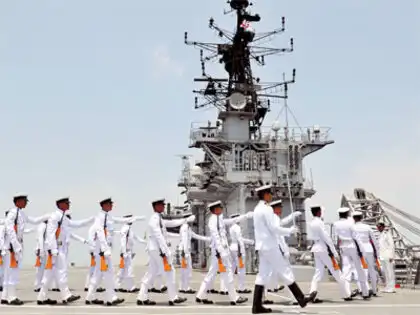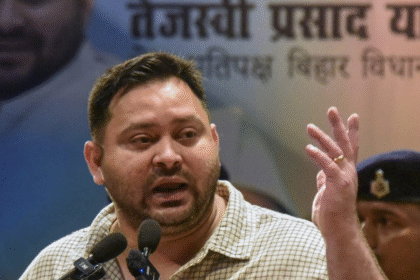Why Rajendra Chola’s Naval Campaign Is Not a Moment of Celebration Even After 1,000 Years
As the country marks a thousand years since Rajendra Chola’s naval expedition to Srivijaya, one would expect sober reflection on a turning point in maritime history. Instead, we are witnessing the rebranding of a brutal 11th-century war as a moment of civilisational glory. Temple festivals, cultural shows, political speeches, and even plans for statues are being projected as a celebration of “India’s global rise” a millennium ago.
Prime Minister Narendra Modi presided over the closing ceremony of the Aadi Thiruvathirai Festival on July 27, 2025 at the UNESCO‑listed Gangaikonda Cholapuram Temple, where he released a Rs. 1,000 commemorative coin in honour of Rajendra Chola I – marking the millennium since the emperor’s maritime expeditions and temple consecration.
In his address, Modi invoked Rajendra’s imperial naval legacy, calling the Chola dynasty as one of the “golden periods” distinguished by military strength, architectural accomplishment, democratic governance via the kudavolai system, and cultural unity.
The event forms the climax of a five‑day celebration, organised jointly by the Union and Tamil Nadu governments from July 23 to 27 , featuring exhibitions on Chola Shaivism and temple arts, performances by Kalakshetra dancers, devotional Odhuvar hymns, and a concert by Ilaiyaraaja. Tamil Nadu has simultaneously unveiled plans for a 35‑foot statue of Rajaraja Chola, a Rs. 55 crore Chola museum at Thanjavur (with Rs. 22 crore already sanctioned), and the Rs. 19.2 crore redevelopment of the ancient Cholagangam tank – built by Rajendra – into an irrigational and tourist landmark.
Why Rajendra’s expedition stands out as an anomaly
But what exactly are we celebrating?
As Hermann Kulke points out in the introduction to Nagapattinam to Suvarnadwipa, Rajendra Chola’s naval raid on Srivijaya in 1025 CE was a rare and disruptive episode in what had otherwise been a long history of peaceful and culturally rich interaction between India and Southeast Asia.
For centuries, India’s influence in the region had flowed not through warships but through trade, religion, and ideas. The spread of Buddhism, Saivism and Vaishnavism – carried by monks, merchants, and maritime networks – left a lasting imprint on the cultural and political life of kingdoms across the Malay Peninsula and the Indonesian archipelago. The transmission of South Indian scripts like Grantha, the flowering of temple architecture, and the artistic echoes of Amaravati and the Pallavas all spoke of connection, not conquest.
Seen against this backdrop, Rajendra’s expedition – described in his own inscriptions as one that “despatched many ships in the midst of the rolling sea” to subdue over a dozen port cities of Srivijaya –stands out as an anomaly. Scholars have long debated the motives behind this unprecedented show of force.
The eminent historian K.A. Nilakanta Sastri had asked as early as 1955, “Why was this expedition undertaken, and what were its effects?” His conclusion was tentative: either Srivijaya had obstructed Chola trade routes to China, or Rajendra simply sought to extend his imperial ‘digvijaya’ overseas – to bring glory to his crown by conquering lands familiar to Tamil traders.
Other historians have offered more direct explanations. G.W. Spencer referred to Rajendra’s campaigns as examples of a “politics of expansion,” even calling them a “politics of plunder.” More recent scholars have focused on economic drivers, particularly the ambitions of Tamil merchant guilds whose members sought access to lucrative Southeast Asian markets.
Meera Abraham, in her study of medieval South Indian trade networks, suggested that the campaign was at least partly intended to secure trading privileges for Tamil-speaking merchants – privileges that would have benefited the Chola ruler, his court, and the commercial elite alike.
Tansen Sen, drawing on previously neglected Chinese sources, further strengthens this commercial interpretation. He cites a revealing passage from the Chinese work Zhufan zhi, which states that Srivijayan authorities attacked ships that bypassed their ports in an attempt to evade taxes. If this account is accurate, then Srivijaya’s efforts to block direct maritime links between Indian ports and the Song Chinese market may have provoked the Chola raids – not once, but twice, in 1025 and again around 1070.
A war for profit
In this reading, Rajendra’s campaign was not a clash of civilisations or a noble maritime adventure. It was the culmination of mounting trade tensions in the Indian Ocean, driven by rising Asian empires competing for control over sea routes and commercial hubs. It was, in short, a war for profit – one that disrupted centuries of shared religious, cultural, and commercial life between South and Southeast Asia.
The scale and ambition of the campaign were remarkable. Rajendra dispatched a large naval armada –some estimates suggest over 60 warships – to sail across the Bay of Bengal and strike deep into Southeast Asian waters.
This was not a symbolic venture but a full-fledged invasion targeting key port cities under Srivijayan control: Palembang (the capital), Kedah (Kadaram), Pannai, and even parts of present-day Thailand and Myanmar. These ports were not just commercial hubs – they were essential nodes on the maritime silk route connecting India with the fabulously wealthy Song China.
Control over the Malacca Strait, the narrow but vital maritime passage between the Malay Peninsula and Sumatra, was the ultimate prize. Any merchant vessel travelling from Arabia, Persia or India to China had to pass through this bottleneck. The Cholas, already dominant in the Coromandel coast, wanted to bypass intermediaries and establish direct trade access. Their naval campaign was thus a classic case of resource capture and route control, long before the era of European colonialism.
Historical records – including the Tamil inscriptions and Chinese accounts – make it clear that the Chola navy launched coordinated attacks designed to cripple Srivijaya’s maritime infrastructure. These were not ritual displays of naval prowess, but devastating raids that decimated cities, disrupted Buddhist monastic networks, and threw long-established trade circuits into disarray.
Thousands may have died in these attacks. The Chola army and navy, often glorified in today’s retellings, were largely composed of recruited mercenaries and professional guild troops, drawn into war not by loyalty to a homeland but by promise of booty and status.
Bad history and dangerous politics
The irony is sharp. For centuries, the Indian Ocean had been a zone of cultural confluence and peaceful exchange. From the early Common Era, Indian religious ideas – especially Buddhism, Saivism, and Vaishnavism – had travelled eastward along these routes, carried by monks, merchants, and artists.
The great temples of Prambanan and Borobudur in Java, the spread of Tamil script and Sanskritised languages, and even Indian-style kingship in parts of Southeast Asia testify to this deep and complex cultural interconnection. To rewrite that history as one of “civilisational conquest” is to betray its real nature.
To dress this up today as a proud symbol of India’s “global rise” is not just bad history – it is dangerous politics. What messages do such commemorations send to our neighbours in Southeast Asia, who view the Srivijaya empire as part of their own rich heritage? Where we see conquest, they may see tragedy.
In the age of ASEAN and Act East, India’s engagement with Southeast Asia must be grounded in mutual respect, peaceful cooperation, and recognition of sovereign identities – not celebrations of fratricidal wars dressed up in civilisational garb. The port cities that Rajendra’s navy attacked were bustling, cosmopolitan hubs of trade, Buddhism, and cultural exchange. That they were razed to secure Indian dominance over maritime routes is a historical fact, not a source of pride.
There is, of course, much to honour in the maritime knowledge of South Indian seafarers, their navigational ingenuity, and the scale of Indian Ocean trade. Tamil merchant guilds like the Ainnurruvar, Manigramam, and Nanadesi operated across vast distances and created one of the earliest forms of proto-globalisation.
What we need is not a nationalist fable but a historically honest engagement with the past. Rajendra Chola’s expedition was a milestone in Indian Ocean geopolitics – but it is not the foundation upon which to build a vision of India’s global role today. A war fought a thousand years ago for trade dominance should not be invoked to stir nationalist sentiment, nor to project cultural superiority.
Let us remember history – but not weaponise it.
Also Read: How Inca Kola Took On Coca-Cola and Won Peru’s Heart







